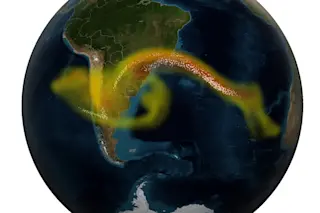Sometimes George Harlow looks more like a medieval magician than the curator of gems and minerals at the American Museum of Natural History. Sweeping an ultraviolet light wand over a box of rocks in a darkened room at the museum, he ignites the stones—uncut rubies—in a burst of fiery red light that is otherworldly. “It’s like Day-Glo colors,” he says. “They are brighter than they should be. You look at them and say: ‘Wow! Look at that red! What’s going on?’ ”
That remarkable radiance—caused by any ultraviolet light, including UV rays from the sun—has given rubies a special place in history. Long before Marco Polo found his way to Asia, Burmese warriors were embedding the stones under their skin to make them invincible in battle. Sanskrit medical texts were prescribing rubies as a cure for flatulence and biliousness. And Hindu lore was preaching that a ruby’s light could not ...













